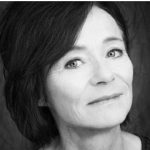Hege Storhaug, HRS
Forskerne bak rapporten ”Living in forced isolation, deler kvinnene inn i to grupper: 1. Undertrykte og bortgjemte kvinner fra kristen eller muslimsk kulturbakgrunn som kontrolleres strengt av familien og omgivelsene de bor i og som ofte har resignert, som betyr at vold eller trusler om vold er lite utbredt. 2. ”Fengslede kvinner” som er ofre for vold og som bokstavelig talt er innelåst i hjemmet. Typisk har kvinnen selv valgt partner, og hun kan både ha kommet til Nederland gjennom giftermål eller hun kan ha bodd i landet i en årrekke før ekteskapsinngåelse. Den største gruppen er dog førstnevnte, melder Radio Netherlands, som altså innvandret etter giftermål.
There are believed to be 200 – 300 ‘hidden’ women living in Amsterdam. A new report called Living in forced isolation describes this number as a cautious estimate and says the actual figure could be much higher.
Researchers from the Verwey Jonker Institute carried out the study commissioned by the Amsterdam city council. They sketch a picture of women shut in at home against their will by husbands or family. These women have virtually no contact with society and rarely go outdoors.
The report identifies two separate groups. The ‘oppressed hidden woman’ group is mainly women from a strict Islamic or Christian culture. They are carefully monitored by their families and community and often resigned to their situation, meaning violence or the threat of violence are less often involved. These women also tend to accept their isolation more because they speak no Dutch and are unaware of their rights in the Netherlands.
The second group of “imprisoned women” are the victims of physical abuse and often literally locked into their homes. Typically these are marriages where the woman has chosen her partner rather than arranged marriages. It includes both women who came to the Netherlands to marry and women who were already living in the country.
The researchers spoke to women who had previously been ‘hidden’ but had broken free of their situation and to people working for various support organisations in Amsterdam. According to the report, by far the biggest group affected are women who have come to the Netherlands to marry. There is a small group of women from immigrant backgrounds born in the Netherlands and a tiny number of native Dutch women.
The Verwey Jonker Institute hopes the report will mean the problems of hidden women are given more priority and that the taboo around the issue in some Dutch Muslim communities will be broken.

